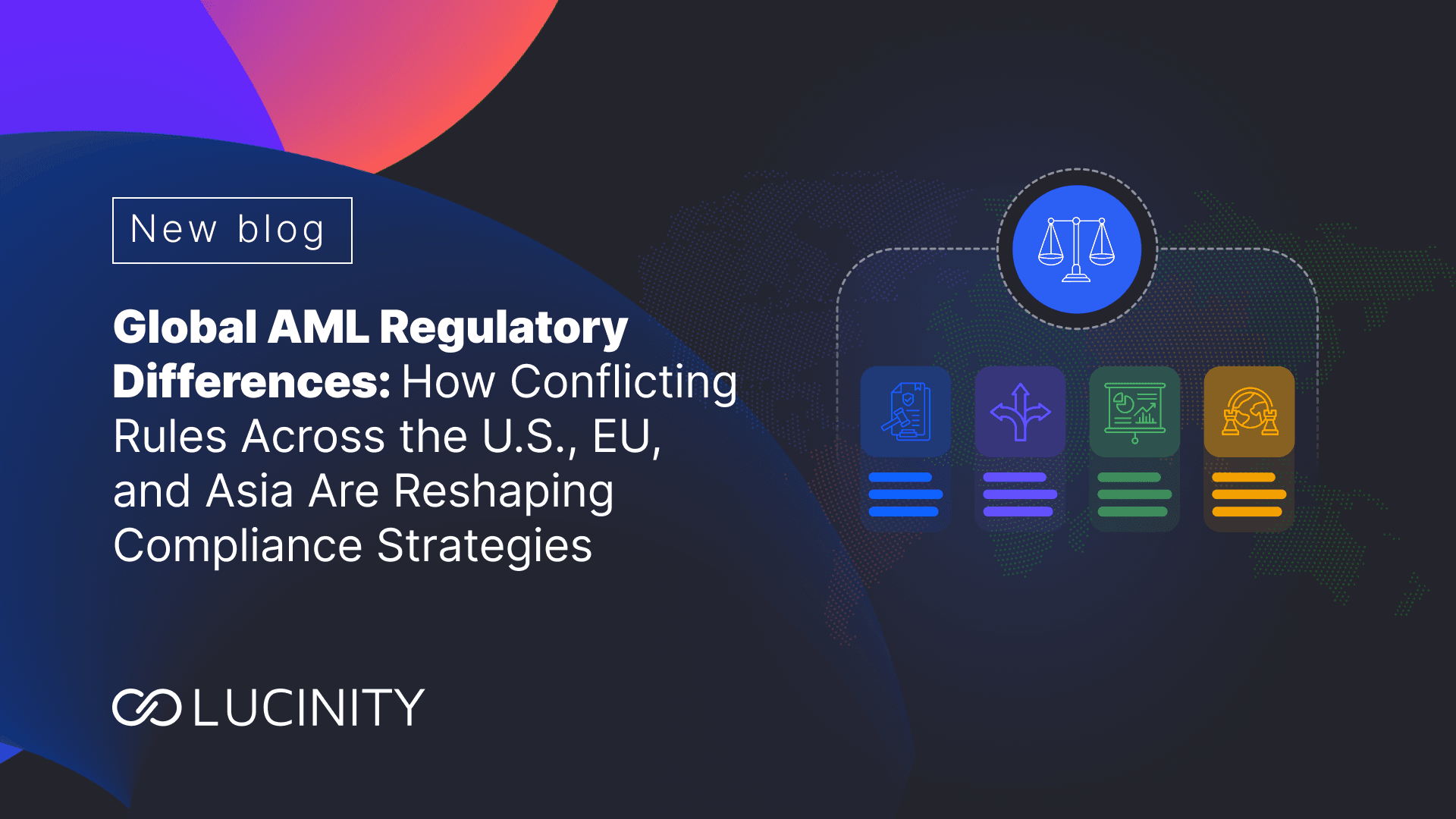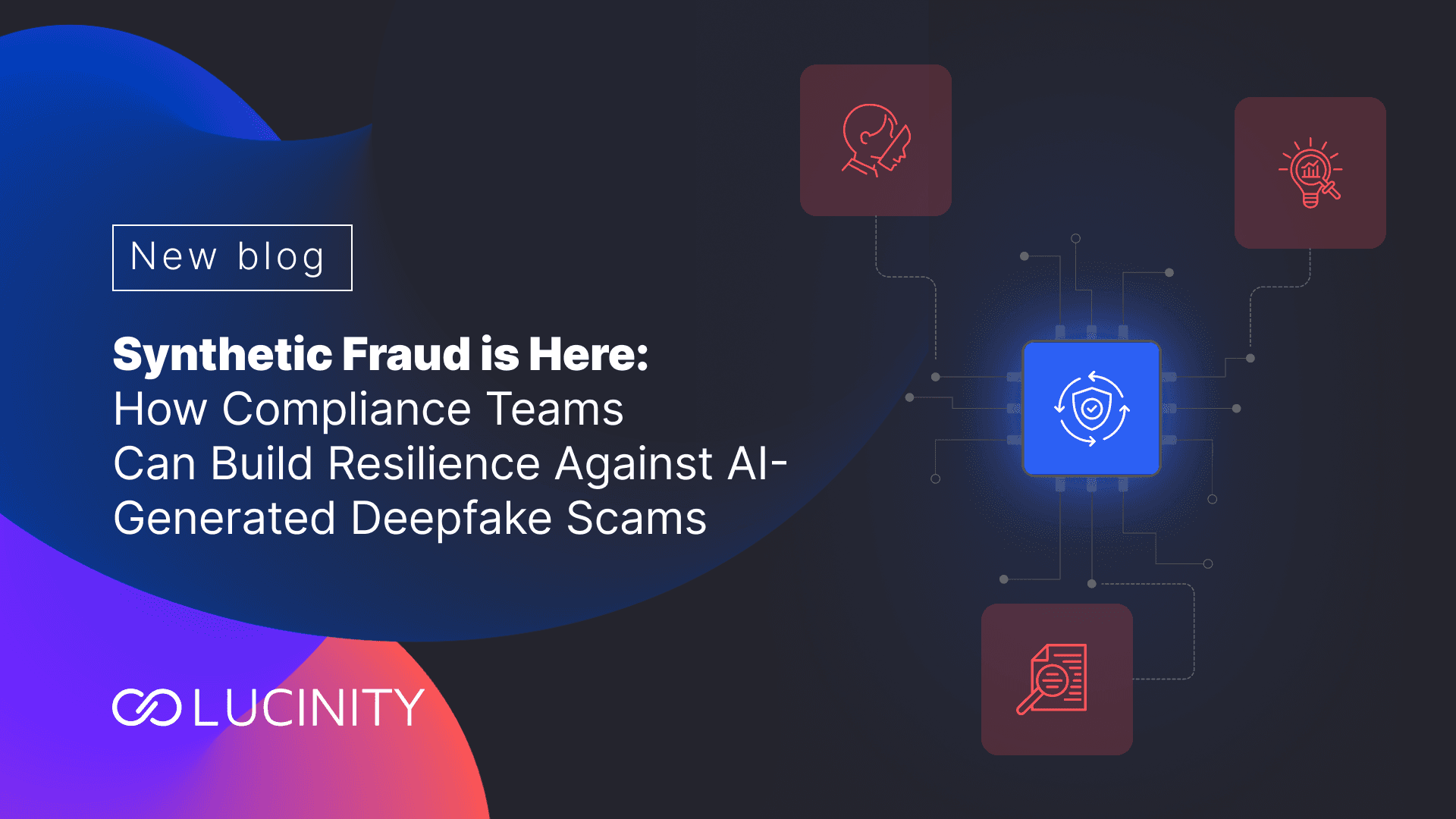Welcoming the New Dawn in Compliance
We have the technology that, when applied correctly, can boost AML productivity, and turn around the traditional view of compliance as a pure cost center.
Last week Lucinity founder and CEO GK joined Ed Wilson and Samantha Sheen to discuss the future of AML compliance and the move financial institutions can make from defense to offense.
In our previous post, we’ve detailed the problem: compliance costs are rising (soaring, even), and rule-based approaches that created a backward-looking “checkbox culture” in AML are struggling.
But every problem is an opportunity in disguise. We have the technology that, when applied correctly, can boost AML productivity, and turn around the traditional view of compliance as a pure cost center, to bring it into the fold as a valuable contributor to the whole business.
Watch the video or read the highlights below.
Lowering the cost of compliance through technology
AML efforts for a long time has been a pure cost center. This year financial institutions spend more than $40 billion in the US alone, and well above $200 billion worldwide, with 58% of that cost attributed to labor, and with no end in sight.
We have sustained that system and not really started to innovate of how to actually find money laundering in the new dawn of financial crime, where the criminals have much more tools available than before. Technology available that we haven't adopted while they have. (GK)
We can take major steps forward by adopting modern technology that helps compliance professionals to do more by doing less. Better allocating resources shifts the balance of cost from a highly labor-intensive configuration to investing in deeper customer intelligence and productivity tools, which lowers total cost of ownership and improves KPIs.
Looking up at the horizon for AML compliance
During the discussion, there was a great analogy that compared traditional KYC data to Polaroid snapshots, while the new dawn of compliance brings continuous monitoring based on behavior.
I like to refer to it as iterative risk profiling, which is constantly knowing how your client or your customer is evolving in such a way that you can tell, is that a good evolution or is that potential misuse of products and services? (Sam Sheen)
Transforming the limited rule-based paradigm to the domain of dynamic and continuous behavior-based understanding of financial habits not only improves AML results. It also opens up opportunities for compliance teams to meaningfully contribute to the business, and become a revenue-generating, valuable part of the organization.
Shared intelligence is key in the future of AML
It’s always been true that humans perform better collectively, augmenting each other’s strengths and compensating weaknesses. Technology enables us to apply the same sentiment to AML as well, while preserving the privacy and security demanded by financial regulations.
As we get further into the AI world, we're going to see faster outcomes, quicker outcomes in ways that benefit the whole system, and hopefully will. And that's where people like GK and others doing similar work need to be in really good contact with the regulators. And the regulators are getting better at it. (Ed Wilson)
As financial crime hides in increasingly globally distributed operations, financial crime fighters can uncover their tracks by utilizing shared intelligence on the same level.
Lucinity’s platform is built from the ground up to foster collaboration and continuous learning. The technology is based on patented and patent-pending learning approaches. The unique encryption protects privacy of the underlying PII data and focuses on sharing the learning aspect instead. These new technologies allow learnings to transcend the traditional silos, both technical and regulatory, and contribute to increasing productivity across the eco-system, one feedback at a time.
Questions, answered
In addition to the great conversation between Sam, GK, and Ed, we also received great questions during the webinar. It was great to see the engagement and excitement about risk-based AML and utilizing technology to replace legacy tools no longer up to the task.
Regulators have long been proponents of risk-based AML, but the shortcomings of their tools (and those of the financial institutions) weren’t conductive to manifest the intent fully into practice. Now with technology available, such as Lucinity’s, that solves those shortcomings, we’ll see significant improvement in AML compliance.
With compliance tools rooted firmly in a risk-based mindset, the amount of recovered illicit funds can go from the meager 0.1% today to amounts that meaningfully move the needle. Better AML productivity makes financial institutions will be a lot less burdened with high operational cost, regulatory fines, liability issues toward stakeholders, and PR problems that lower their brand value.
Welcome to the future!
As Sam has put it at the end of the discussion:
We're past the stage where people are trying it [AI] for the first time. So, it's such a great opportunity now to go, what have we learned? What can we do better? And what can we be leveraging now by listening to one another and going there is a great spot right there where we could be working smarter.
What do you think? Do you agree? Have any questions? We’d love to hear from you: our email is always open.
The future is bright for AML compliance, and with the correct mindset manifested through the correct technology, we can Make Money Good.





